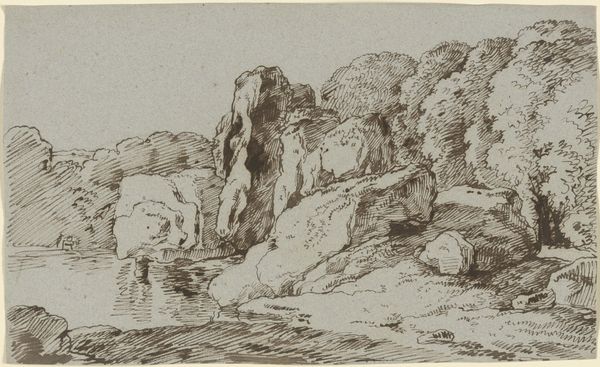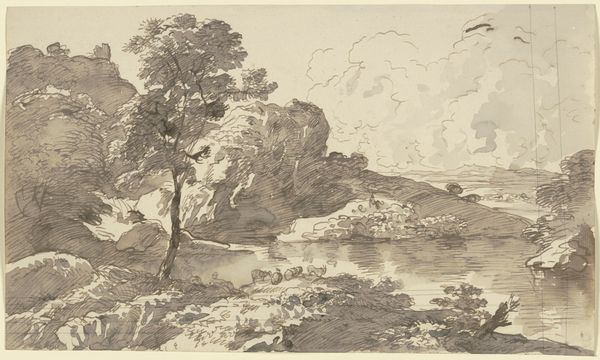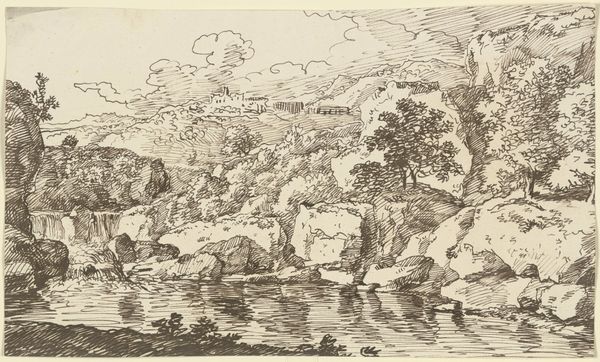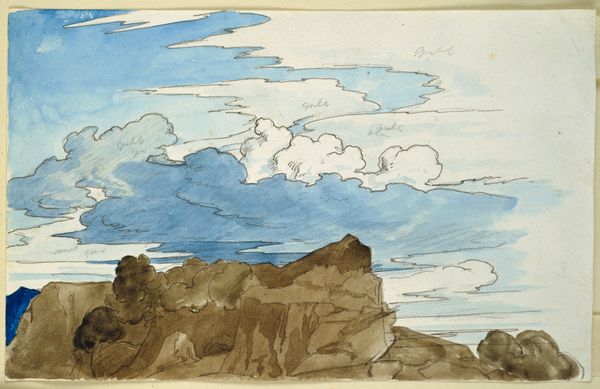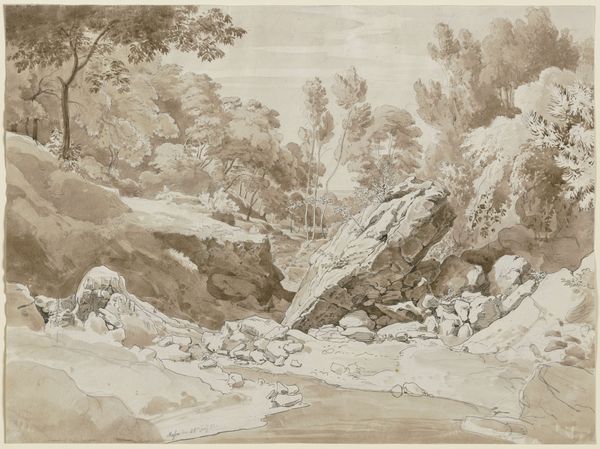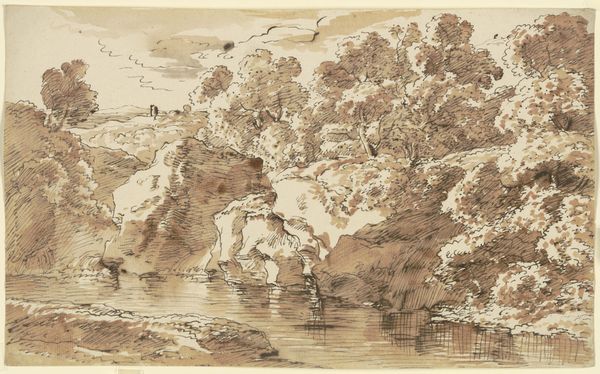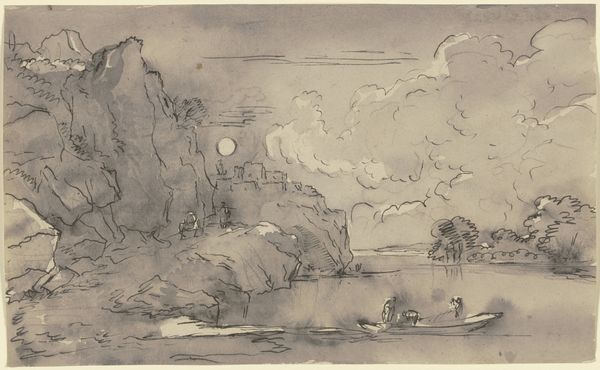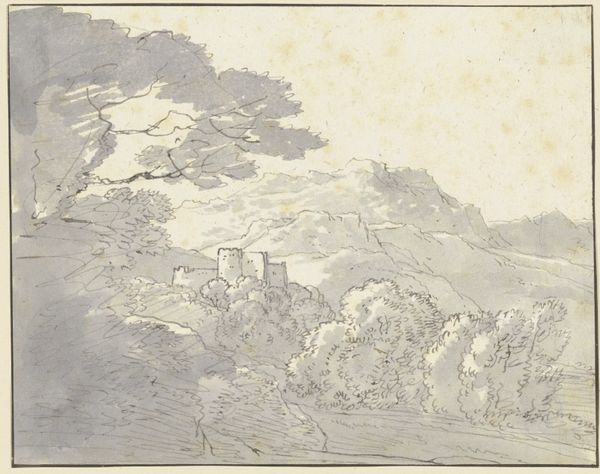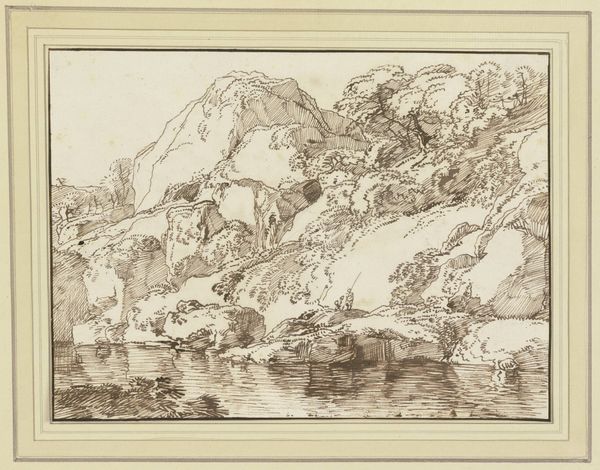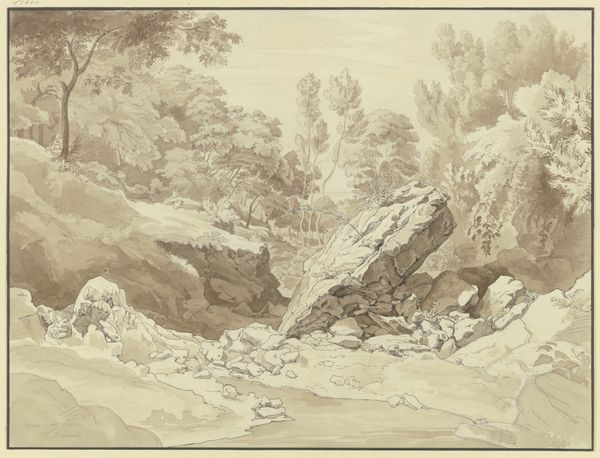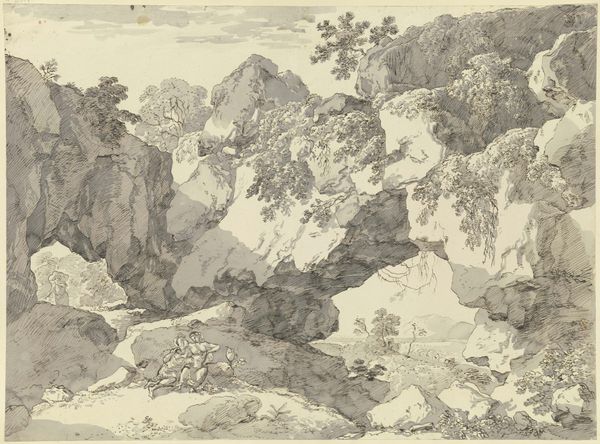
drawing, etching, dry-media, ink, pencil, pen
#
landscape illustration sketch
#
drawing
#
ink drawing
#
pen sketch
#
etching
#
pencil sketch
#
landscape
#
dry-media
#
ink
#
pencil
#
15_18th-century
#
pen
Copyright: Public Domain
Editor: We’re looking at "Gewässer mit felsiger Uferböschung," a landscape drawing by Franz Kobell, made with pen, ink, and pencil. It has a kind of tranquil, almost dreamlike quality to it, like looking at a memory. What jumps out at you when you see this piece? Curator: What I find interesting is how Kobell uses the conventions of landscape to shape a vision, a political perspective even, related to ownership and control. Think about it: whose landscape is this? Who gets to enjoy this vista? How does Kobell depict that relationship? Editor: So, you're suggesting that even in what appears to be a simple landscape drawing, there's an underlying social commentary? Curator: Precisely! Consider the context. Landscape art was becoming increasingly popular with the rising middle class. They were now consumers of art, consumers of land as property. What visual cues are present here that might be reinforcing ideas around nature as picturesque and available? Consider the light and shadow; what spaces does the artist emphasize and which does he obscure? Editor: I see what you mean. There's a certain ownership implied in the way the landscape is presented, almost like a real estate advertisement of the time. Curator: Exactly. Now think about how museums exhibit these pieces. Does that historical framing change how we see it today? Does displaying it reinforce or challenge the historical power dynamics that created the piece? Editor: That’s really made me rethink what landscape art can communicate beyond just a pretty picture. Curator: And for me, revisiting this work highlights how artists, consciously or not, are always participating in larger social conversations through their choices.
Comments
No comments
Be the first to comment and join the conversation on the ultimate creative platform.


